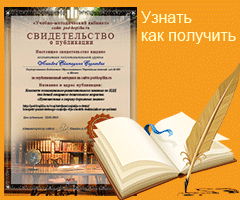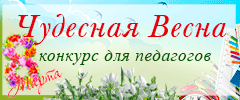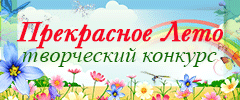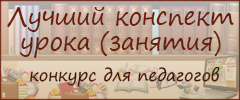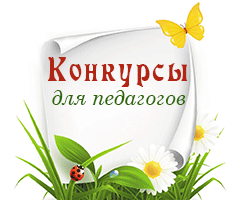Конспект урока английского языка «Мир посткроссинга», 8 класс
Конспект урока английского языка «The world of postcrossing» для учащихся 8-10 класса
Автор разработки: Холомьева Ирина Андреевна, учитель английского языка в МБОУ «Гимназия № 1 им. Н.М. Пржевальского», г. СмоленскДанный конспект урока может представлять интерес для учителей английского языка, работающих в среднем звене (8-10 класс). Основная ценность описываемого урока заключается в том, что он предоставляет возможность ребятам расширить кругозор, познакомившись с таким культурным явлением, как посткроссинг (набирающим популярность и в России, и за рубежом), а также применить свои языковые навыки на практике.
Тема: «The world of postcrossing».
Форма проведения: интегрированный урок с использованием межпредметных связей (английский язык + технология).
Цель: развитие иноязычной коммуникативной компетенции.
Задачи:
1) практические:
- ввести и активизировать лексические единицы по теме «почта»;
- научить высказываться на заданную тему с опорой на лексику и просмотренный видеоматериал;
- научить правильно оформлять почтовую открытку.
2) развивающие:
- развивать внимание, память, усидчивость;
- развивать умение работать в разных режимах;
- развивать умения монологической и диалогической речи;
- развивать фонематический слух;
- развивать умение понимать англоязычную речь и реагировать на нее;
- развивать умение анализировать по данной теме урока, выделять главное, сравнивать, систематизировать.
3) воспитательные:
- воспитывать интерес к английскому языку и англоязычной культуре;
- воспитывать уважение к собеседнику;
- воспитывать культуру речи;
4) образовательные:
- повысить общую культуру учащихся;
- расширить кругозор учащихся.
Формируемые УУД:
Коммуникативные:
• Слушать, отвечать и реагировать на реплику адекватно речевой ситуации;
• Ясно, логично и точно излагать свою точку зрения, использовать языковые средства, адекватные обсуждаемой проблеме;
• Строить устное высказывание в соответствие с коммуникативной задачей;
• Воспринимать информацию на слух; слушать собеседника и понимать речь других.
Познавательные:
• Ориентироваться в своей системе знаний;
• Извлекать необходимую информацию из видеоматериала;
• Выдвигать гипотезы (предположения);
• Использовать информацию для решения учебной задачи;
• Систематизировать, обобщать изученное, делать выводы.
Регулятивные:
• Осуществлять целеполагание на основе соотнесения того, что уже известно и усвоено обучающимися.
Личностные:
• Формировать положительное отношение к учению;
• Актуализировать сведения из личного жизненного опыта;
• Развивать желание приобретать новые знания, умения, совершенствовать имеющиеся;
Оснащение: раздаточные материалы, открытки (чистые по количеству учащихся, с изображениями разных стран мира + одна дополнительная для рефлексии), гашеные марки, материалы для декорирования (фломастеры, цветные ручки, стикеры), компьютер или ноутбук с доступом в интернет.
Ход урока:
Этап 1. Орг. момент + целеполагание + речевая разминка Учитель: Good morning, my dear friends! I’m so glad to see you! It’s such a wonderful day today, isn’t it? I hope you’re in high spirits today and everything is fine.
Please look at the words that are written on the cards I gave you.
(Карточки с вокабуляром нужно распечатать заранее, либо использовать для этого доску.)
a postcard - открытка
an envelope - конверт
a postal code / a ZIP-code - индекс
an address - адрес
a post office - почтовое отделение
a postage - почтовые расходы
a post box - почтовый ящик
Учитель: Do you know any of the words? No? Then let’s read together and translate.
Now when you know the translation, can you guess the topic of our lesson? What are we going to talk about?
That’s right, we’re going to talk a bit about postcards. Please, share your opinions on postcards! Do you think that it’s an old-fashioned way of communication and no one uses it now? Do you send postcards often? On what occasions?
(Небольшая дискуссия-разогрев, во время которой учащиеся делятся своими мнениями об открытках)
Учитель: Thank you so much for your ideas! We all have different opinions of postcards and this is fantastic!
Этап 2. What is a postcard?
Учитель: Now, does anyone know the origin story of postcards? Can you guess when and where the first postcard appeared?
(Учащиееся высказывают свои предположения)
Учитель: Well, to be honest, no one knows this for sure! But there’s a theory which says that first postcards had no pictures on them at all, the front part was for the address and the back was for the message itself. So it was like a small letter, and the aim of postcards at that moment was to simplify the etiquette of the letter format, and also to reduce the work, paper and costs involved in the sending of a short message.
For example, look at this postcard with business correspondence:
You can see the front with the address:

And the back with the message:

Учитель: This idea was first presented in Germany. Almost half a century later, in 1902, the British Post Office allowed messages to be written on one half of the side normally reserved for the address, paving the way for the divided back era of postcards. This left the reverse side of the card free to be completely filled with an image. This is the appearance of a postcard we know nowadays:


Учитель: Now let’s take a closer look at it and get acquainted with the parts of a postcard. We will watch a video, and then I will ask you some questions about it, so listen attentively and pay attention to the most importatn information!
Now, let’s check how attentive you were by answering some questions about the video:
1. Where can you purchase a postcard? (It can be purchased from book stores, souvenir shops, news stands.)
2. Who usually sends postcards? (It’s usual for tourists but nowadays anyone can send a postcard.)
3. Where’s the place for a stamp? (It’s in the upper right hand corner, but actually not necessarily.)
4. What is a stamp? (It’s a piece of paper used as proof of payment of postage.)
5. What are the sides of a postcard? What is their purpose? (The left side is for the message, the right side is for the address.)
6. What essential parts the address consists of? (House number, street, town, city, country, ZIP code/postal code.)
7. Where can you buy stamps or check the amount of postage? (At the nearest post office.)
Учитель: Thank you very much for your answers!
Этап 3. What is postcrossing?
Учитель: Have you ever heard the word “Postcrossing”? Can you guess the meaning?
It’s a relatively new word, meaning a person who exchanges postcards with different people across the globe. It all started in 2005 when the website of the same name was launched.
The website platform was built by Paulo Magalhães, a Portuguese engineer who loved receiving postcards but did not know many people he could exchange them with. So he coded a website on his free time with the goal of connecting him with other people who also enjoyed sending and receiving postcards. What started as a small side project quickly became a worldwide hobby, shared by many postcard enthusiasts. To date, over 57 million postcards have been exchanged through the platform, with thousands more on the way.
Postcrossing is now famous worldwide and lots of people enjoy exchanging postcards and collecting them. It’s a great way of communicating with people, creating new connections and finding new friends who share your interests.
So, how does it work? Let’s actually go to the website and find out!
Необходимо открыть сайт на компьютере, одновременно передавая изображение на экран через проектор, чтобы показать ребятам наглядно то, о чем говорит учитель.
Если нет возможности воспользоваться интернетом, можно показать учащимся следующую памятку:

Учитель: First, you need to create a profile and to tell a bit about your hobbies and preferences, so that your future penfriends know what postcards you would like to receive and what message it’s better to write to you. And then the real fun begins. The idea of the website is simple: for each postcard you send, you will receive one back from a random postcrosser from somewhere in the world. You never know what exactly you’re going to receive.
The first step is to request to send a postcard, then you’ll be given the address of a random member and a Postcard ID which is necessary to write to get a postcard back. Then you just pick a postcard according to the preferences of the receiver, write a friendly message, along with its Postcard ID and the address given.
Sometimes it’s really a big question what to write. Do you have any ideas? Let's create a list on the blackboard!
(Возможные варианты: describing your town/city, a local tradition or a local food, talking about your studies/hobbies, movies or books you love, giving a short weather description etc.)
Учитель: You are absolutely right, guys! We can always write some random facts about our country/culture, about our city or the place we live at. It’s always interesting to read about different places and cultures from far away corners of the world. You can also write about your day, about what happened to you recently. Just share your interests or emotions! If you went to the skating rink or saw a new movie, that may be a good thing to write about.
As you may see, there are no limits, and that’s what is great about postcrossing. It’s basically a new form of art nowadays, you can really express yourself using these rectangular pieces of paper.
Imagine that you finished it. You wrote a perfect message and decorated everything. Then what? Then you glue the stamps and send it. Once it arrives, you’ll get the notification and as soon as the receiver registers the ID you’ll be able to receive a postcard from a random person as well. It’s really fun every time, because it’s always a surprise where the card is coming from.
So, postcrossing is a very popular hobby nowadays, and we have this beautiful opportunity of exchanging postcards thanks to Paulo. Lots of people indulge in postcrossing and enjoy getting real mail, so postcards are not that outdated as some people think.
Этап 4. Creating a postcard
Учитель: Now when we know all the peculiarities of postcrossing, I think you are ready to create your own postcard. Maybe it won’t be your first one, but I really do hope that won’t be your last one either. You’ll get a blank postcard, some stamps and the materials to decorate it with. You’re free to write anything you want and decorate it in any way you want. The only necessary thing to remember is the address and the right way to write it. Let’s repeat again what parts the address consists of!
(House number, street, town/city, postal code, country)
You’ll get cards with some notes on how to write the address correctly, so don’t worry.
(Карточки-подсказки нужно распечатать заранее)



Учитель: Also, don’t forget the stamps! I’ll give you some, but they’re already used so they’re good only for decoration. They are real stamps from different countries, but to send a postcard you’ll need our Russian stamps of the corresponding amount of postage. Those you can buy almost at every post office. Is everything clear? If you have any questions, feel free to ask!
(Каждый учащийся выбирает открытку с изображением достопримечательностей той или иной страны - это та страна, откуда он "родом". Учащийся придумывает себе адрес (для слабых групп адреса можно составить заранее, воспользовавшись сайтами рандомного генерирования несуществующих адресов в разных странах - Random address generator), а потом все ребята обмениваются придуманными адресами между собой. Полученный в результате обмена адрес - тот, который нужно написать на открытке, это выдуманный адрес того одноклассника, кому учащийся "отправит" свою открытку. Написав на открытке приветливое сообщение и небольшой рассказ о себе или стране, которая ему досталась, ученик клеит марку и отдает готовую открытку учителю, а тот, исполнив роль почтальона, передает ее получателю! Все это можно объяснить ребятам на русском, чтобы они все поняли. Если подобная схема обмена внутри группы кажется вам сложной, можно просто раздать ребятам любые рандомно сгенерированные адреса и попросить их написать открытку воображаемому получателю - тогда у каждого останется та открытка, которую он сам писал и украшал. Но вариант с обменом между одноклассниками даст им возможность почувствовать суть посткроссинга;) )
Этап 5. Подведение итогов, рефлексия
Учитель: I really do hope that now you know more about postcrossing and postcards. Maybe some of you will find good friends thanks to it, maybe some of you will indulge in postcrossing as it is a very interesting hobby. If you still have questions, there are lots of sources of information about postcrossing. First of all, visit the website.
There are still lots of things to find out about postcards, but I hope that your acquaintance with them today went well and was just the beginning of your big journey! If you liked the lesson, write a couple of words or draw something nice on a postcard I'll give you. Thank you! It was great to work with you! Goodbye!
Рекомендуем посмотреть:
 Конспект урока английского языка в 8 классе по теме «У природы нет плохой погоды»
Конспект урока английского языка в 8 классе по теме «У природы нет плохой погоды»
 Конспект урока английского языка в 8 классе
Конспект урока английского языка в 8 классе
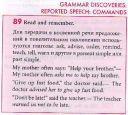 Конспект урока английского языка в 8 классе «Просьбы и команды в косвенной речи»
Конспект урока английского языка в 8 классе «Просьбы и команды в косвенной речи»
 Конспект урока английского языка в 8 классе «Читать или не читать»
Конспект урока английского языка в 8 классе «Читать или не читать»
Похожие статьи:
Конспект урока английского языка в 8 классе на тему «Protecting the Environment»
Конспект урока английского языка, УМК «Enjoy English» Биболетова М. З. 8 класс
Конспект урока английского языка, УМК «Enjoy English» Биболетова М. З. 8 класс. Тема: Прогноз погоды
План-конспект урока английского языка в 8 классе по теме: Праздники
Участник №8 профессионального конкурса для педагогов «Лучший конспект урока (занятия)» с 1 сентября по 30 ноября 2022 года
|
|
Автор: Ирина Андреевна Холомьева
Опубликовано: 560 дней назад (2 ноября 2022)
Просмотров: 557
Рубрика: Без рубрики
|
+1↑ Голосов: 1 |
Нет комментариев. Ваш будет первым!
